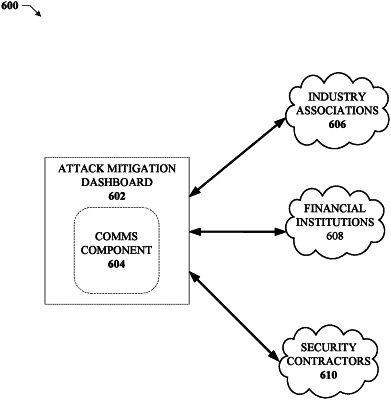| CPC H04L 63/1441 (2013.01) [H04L 43/0882 (2013.01); H04L 43/0894 (2013.01); H04L 63/1425 (2013.01)] | 16 Claims |

|
1. A system, comprising:
a processor coupled to a memory that stores instructions, that when executed by the processor, cause the processor to:
sample network data from a plurality of network elements in a first network;
predict an attack of a particular type on the first network prior to occurrence of the attack based on the network data and patterns of historical attacks;
access a dashboard, wherein the dashboard receives information in a data feed from a second network indicating an effective deployment of a deployed service to mitigate the particular type of network attack on the second network, wherein the second network is separate from the first network, wherein the dashboard further models a plurality of services for counteracting the predicted attack;
select, from the deployed service and the plurality of modeled services, one or more services that can counteract the particular type of network attack; and
generating a visualization summarizing the network data and identifying the predicted attack on the first network and the one or more selected services, wherein generating the visualization summarizing the network data further comprises creating a map illustrating connections between the network elements and network traffic between the network elements;
conveying, for display on a display device, the visualization;
invoking one of the one or more services in response to receipt of a signal associated with the visualization selecting the one of the one or more services;
determining a risk level associated with network traffic between network elements; and
indicating the risk level on the map.
|